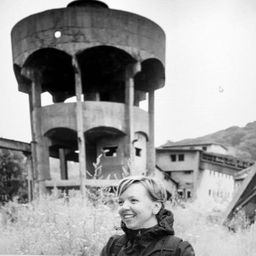The Big (Ugly) Steel Giant” Towards the acceptance and acknowledgement of steel industrial legacy dating the recent past: Reşiţa, Hunedoara and Galaţi (Romania)
My Session Status
What:
Paper
When:
12:00 PM, miércoles 31 ago 2022
(20 minutos)
Where:
UQAM, pavillon J.-A. De Sève (DS)
- DS-1420
During the socialist years in Romania (1945 – 1989), when significant territorial transformations occurred due to the forced industrialization - urbanization processes, industrial architecture represented a true ‘leitmotiv’ of planning practice. Starting from the post-war reconstruction phase, industrial development became a top priority of the socialist State, leading to high investments in the field with particular attention to the main manufacturing branches of the heavy industries such as mining, steel production and fuel energy. The socialist system in Romania, just like in its counterparts from the Eastern Bloc, was based on the planned economy, and on the nationalization and centralization principles of the ‘soviet model’, already experienced in the Soviet Union during the 1920s and 1930s. Thus, the entire national economy was aimed at providing support to the steel industry, while society was reconfigured towards the needs of the workforce and resources.
Architects practicing during those years, as Ion Mircea Enescu (1920-2010) did in the State design institutes involved in the industrial planning and designing at national level, argued that industrial architecture represented one of the most “radical modernist transformations” among the other architectural themes, as well as being “a promising field for architects” in a context of state control of the profession. Ion Mircea Enescu practiced as an architect throughout the entire socialist period, from the moment of his graduation the School of Architecture in Bucharest in 1946 to the system’s fall in 1989, and his works involved major industrial sites and buildings around the country.
Starting from this premises, the paper investigates a particular category of the industrial architecture built during the 1945 – 1989 period, that of the “integrated steel plant” illustrated at national level through the case study of Hunedoara, Resita, and Galati steelworks. Moreover, the paper intends to investigate the manner in which the experiment of Hunedoara Steelworks, already existing and functioning before the 1948 nationalization process, and considered the first planning and architectural intervention in the post-1945 years, had a wider territorial impact in defining the Romanian “steel socialist legacy”. By illustrating examples of socialist heavy industries developed and, further, modernized during the 1945 – 1989 years, the paper aims at identifying, analyzing, and illustrating various forms of tangible manifestation of this specific built typology from an architectural perspective.
While the recent years scholarly interest starts to be directed towards the recent past contributing to the increasing knowledge and acknowledgment of Romanian architectural scene, they occur at a slower pace than the transformations of the respective inherited of the built environment. In overall terms however, the industrial building patrimony probably represents one of the most threatened and vulnerable built typologies undergoing abandonment due to economic obsolescence, and therefore, at risk of further destruction under the pretext of recycling for scrap, land reclamation or real-estate speculation. Thus, through the chosen case studies – Hunedoara, Resita, and Galati, it will bring forward awareness on the issue of the balance between acceptance and rejection of the industrial testimonies still existing in the present post-socialist and post-industrial Romania. The main purpose is that in defining an approach methodology of this built legacy, followed by an open debate in matter
of its patrimonial value acknowledgment and enhancement in the current Romanian setting.
